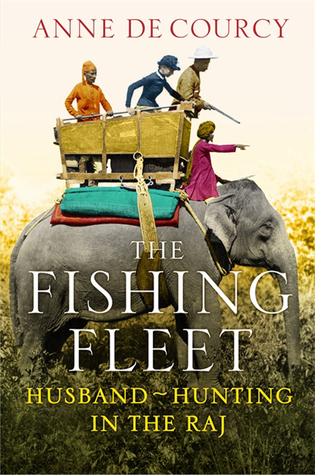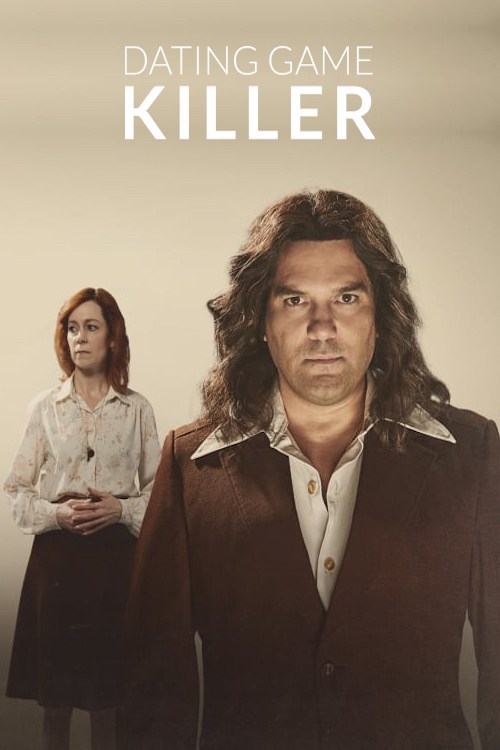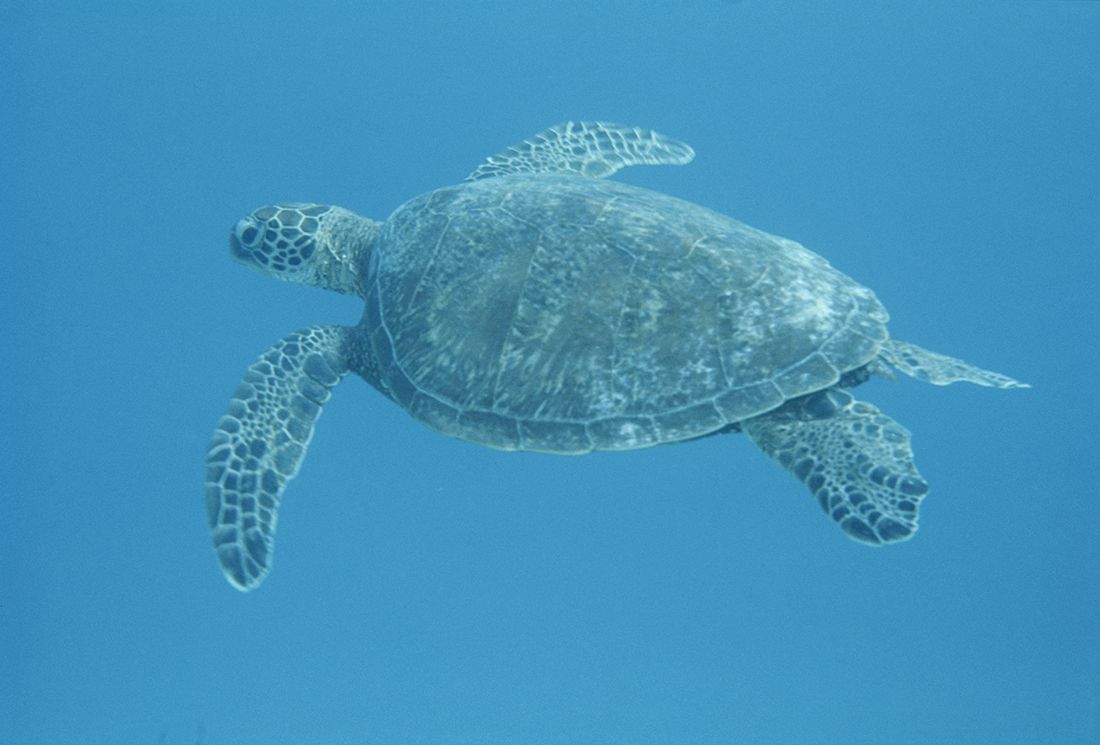After the bustle of Christmas TV, it’s been a quieter January on the box here at 100 Films Towers. Nonetheless, I did catch up with one of the best series of 2017 — possibly of all time…

Blue Planet II
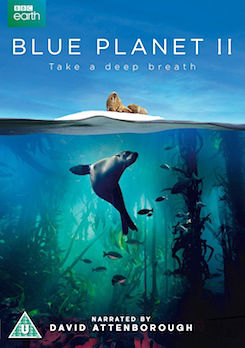 Despite the massive hype, I missed this when it aired. I say “missed” — I always intend to watch these big natural history shows, then never get round to them. I confess, it was new tech that persuaded me: after I saw it was all available in UHD on iPlayer, I had to give that a go. And…
Despite the massive hype, I missed this when it aired. I say “missed” — I always intend to watch these big natural history shows, then never get round to them. I confess, it was new tech that persuaded me: after I saw it was all available in UHD on iPlayer, I had to give that a go. And…
Wow.
That’s the only word for it, really. Well, it isn’t — “stunning” would be another one. Incredible. Wondrous. Mind-boggling. I’m talking about both the UHD photography and the series itself here. In the latter camp we can also add educational, and informative, and eye-opening, but those are kind of a given — it’s a BBC David Attenborough series, of course it nails that part. Attenborough’s script and delivery strikes the perfect balance between acknowledging the creatures’ intelligence and personalities without slipping into anthropomorphising them. But many of the creatures and places we’re shown are almost unbelievable. Never has that old chestnut “we know more about the surface of the Moon than the oceans” seemed more true. James Cameron is planning to explore the alien life in Pandora’s oceans in Avatar 2, but he’s going to have to go some way to imagine anything more alien than what’s to be found in our real depths. I wonder if he’s seen this? He should. Everyone should.
If that wasn’t enough, the visuals are awe-inspiring. The vibrant colours of some of these creatures were incredible, unquestionably enhanced by the wider spectrum of HDR. The level of detail the extra resolution seems to afford made it all feel very real too — creatures like dolphins and sharks don’t show gaudy colours, but the texture and sheen of their bodies felt like you could reach out and touch it.
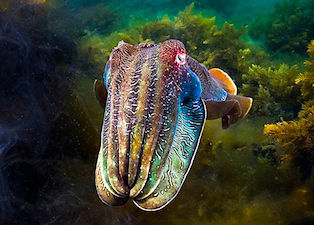 Now, I didn’t do a comparison to the regular HD stream, so I can’t really say how much better the UHD made things, but I do have a few observations. Related to it looking “more real”, after viewing I saw a good resolution photo taken for the series of one creature (this chap) which didn’t seem to capture the texture of its body in the same way the episode did. That could be the added effect of motion vs a still photo, but it could also be the extra detail from 4K. And talking of comparing still images, when a UHD episode was selected it displayed the iPlayer menu in UHD/HDR too, so I was able to do a direct comparison of each episodes’ key image. In particular, the one pictured above (from episode five) really showed off the vibrancy of HDR.
Now, I didn’t do a comparison to the regular HD stream, so I can’t really say how much better the UHD made things, but I do have a few observations. Related to it looking “more real”, after viewing I saw a good resolution photo taken for the series of one creature (this chap) which didn’t seem to capture the texture of its body in the same way the episode did. That could be the added effect of motion vs a still photo, but it could also be the extra detail from 4K. And talking of comparing still images, when a UHD episode was selected it displayed the iPlayer menu in UHD/HDR too, so I was able to do a direct comparison of each episodes’ key image. In particular, the one pictured above (from episode five) really showed off the vibrancy of HDR.
Finally, the making-of bits they have at the end of every episode looked more muted than the main show, and I wouldn’t be surprised if that’s because they were finished at HD rather than UHD. But that’s not to say those segments looked bad. So while I feel fairly sure the HDR image was better to at least some degree, I’m also certain that at least some of this marvellousness would come across in regular ol’ 1080p — quality does filter down with image resolution, and they’ve done such sterling work here.
Anyway. Like everyone else, I can’t recommend Blue Planet II enough to anyone… but doubly so if you have a chance to see it in UHD with HDR.

Little Women
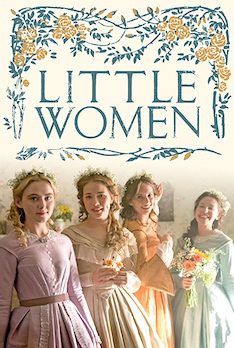 As I mentioned last time, I’ve never seen or read a previous version of Little Women, but apparently this new one was pretty faithful so I figure I’m all learned about it now. The biggest change appears to be in the ages of the four eponymous heroines: in this version they look to be about the same age, in their late teens or early 20s at the start, but in fact they should be 16, 15, 13 and 12. Quite different. A challenge for adapters, though, because the story covers a timespan of five or more years (by my reckoning). Other films have dodged this by casting two actresses in some roles, but this adaptation sought to avoid that. It has its cons (an early petulant act comes across very differently if done by a 12-year-old versus a c.17-year-old, I think), but it is what it is.
As I mentioned last time, I’ve never seen or read a previous version of Little Women, but apparently this new one was pretty faithful so I figure I’m all learned about it now. The biggest change appears to be in the ages of the four eponymous heroines: in this version they look to be about the same age, in their late teens or early 20s at the start, but in fact they should be 16, 15, 13 and 12. Quite different. A challenge for adapters, though, because the story covers a timespan of five or more years (by my reckoning). Other films have dodged this by casting two actresses in some roles, but this adaptation sought to avoid that. It has its cons (an early petulant act comes across very differently if done by a 12-year-old versus a c.17-year-old, I think), but it is what it is.
Anyway, setting that point aside, it seems quite clear why the book has endured in popularity. (Or, if you prefer, books — in the US it’s one novel with a Part 1 and Part 2, but in the UK it’s separated as Little Women and Good Wives. This version adapts both.) There’s a certain tweeness and sweetness to it — it’s about four sisters who are poor but not that poor and all love each and do fun homely things and have romantic entanglements and so on and so forth — but it’s laced with enough seriousness and sadness (to say more would be spoilersome) to add a bit of welcome grit. Plus the big central romance doesn’t pan out how you might expect. Actually, it develops with a solid dose of realism that more romance-based storylines might benefit from.
This particular adaptation shines with the typical high quality of a BBC drama, with a recognisable elder cast (Emily Watson, Dylan Baker, Michael Gambon, Angela Lansbury) being equalled by a quartet of newcomers and almost-newcomers as the girls — including Maya Hawke, who looks scarily like her mother, Uma Thurman. (Once you’ve seen it, you can’t unsee it. Seriously, it’s like they’ve used time travel to cast a young Uma Thurman.)


Things to Catch Up On
 This month, I have mostly been missing the BBC’s pair of big, grim January dramas, McMafia and Hard Sun. They both seem to have received a very mixed reaction (not that I’ve been following too closely because, y’know, spoilers), but both have intriguing setups: the former a drama about the global business of the Russian mafia inspired by a non-fiction book; the latter a pre-apocalyptic sci-fi/crime thriller from the creator of Luther.
This month, I have mostly been missing the BBC’s pair of big, grim January dramas, McMafia and Hard Sun. They both seem to have received a very mixed reaction (not that I’ve been following too closely because, y’know, spoilers), but both have intriguing setups: the former a drama about the global business of the Russian mafia inspired by a non-fiction book; the latter a pre-apocalyptic sci-fi/crime thriller from the creator of Luther.

Next month… no specific idea, to be honest. But I’ve got the latest seasons of The Crown and Peaky Blinders waiting to be binged, and plenty of Arrow and The Flash to catch up on.
Advertisements Share this:- More
